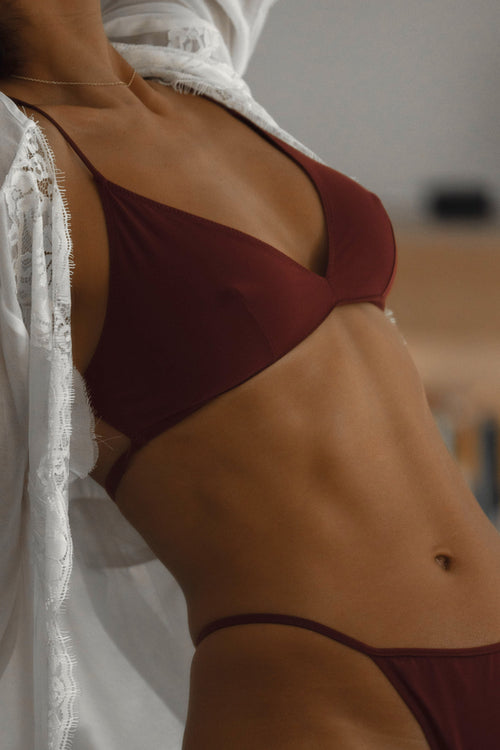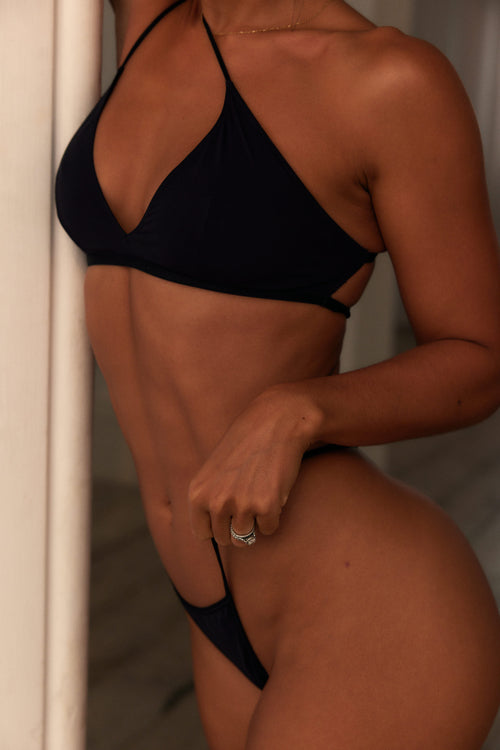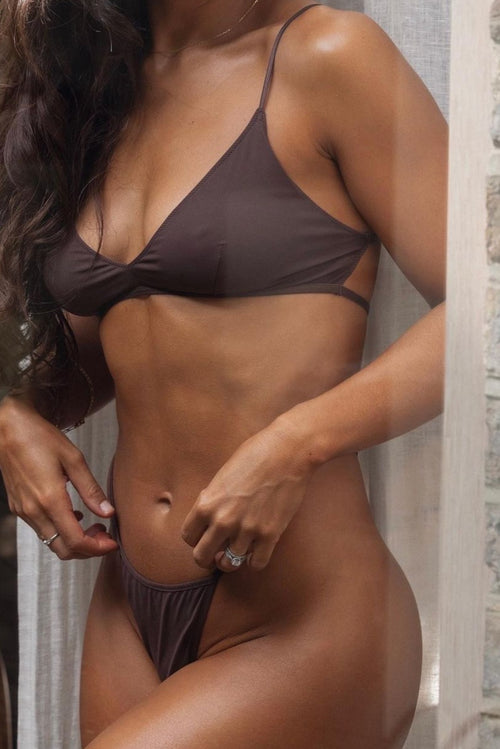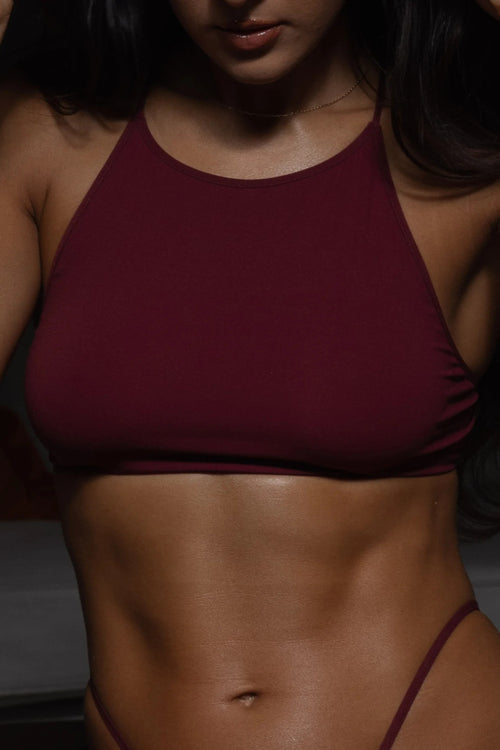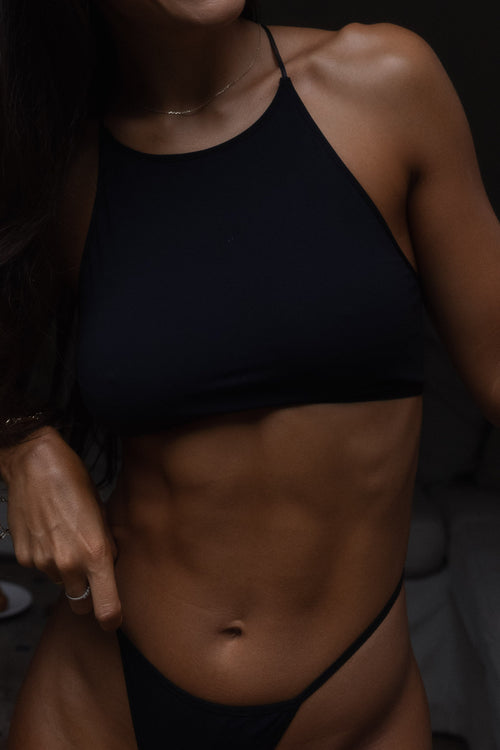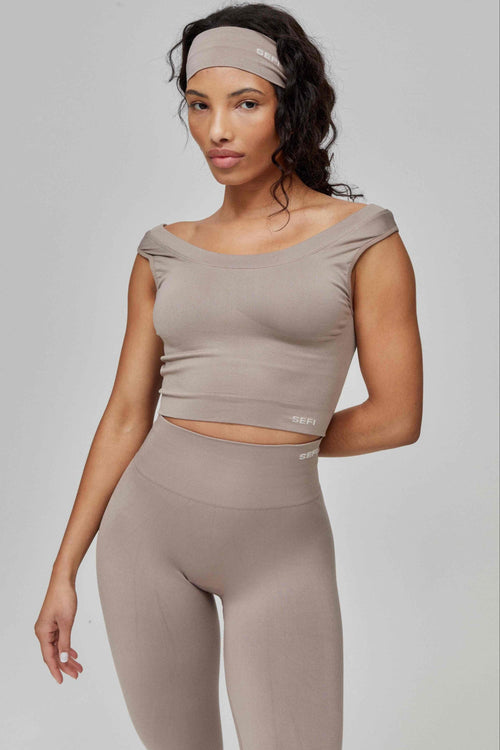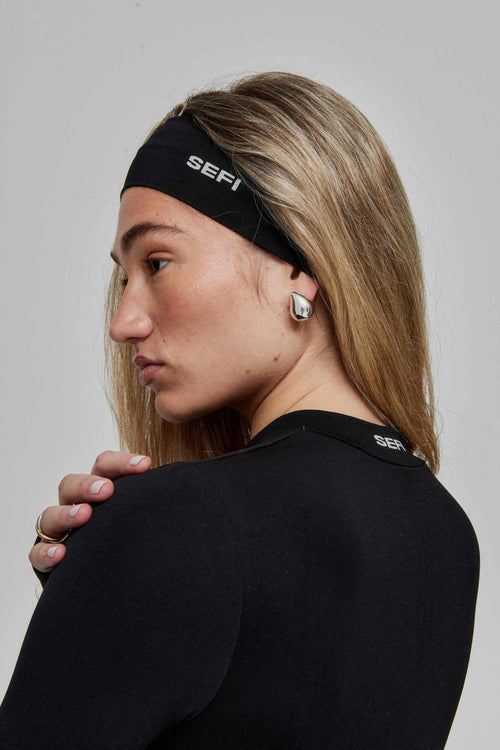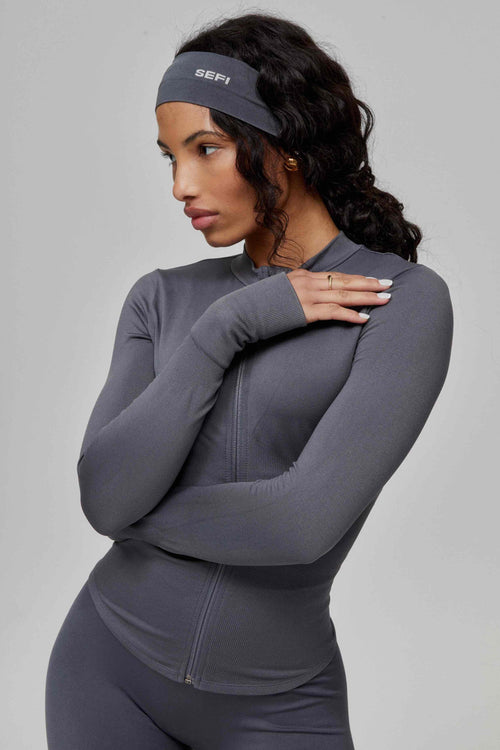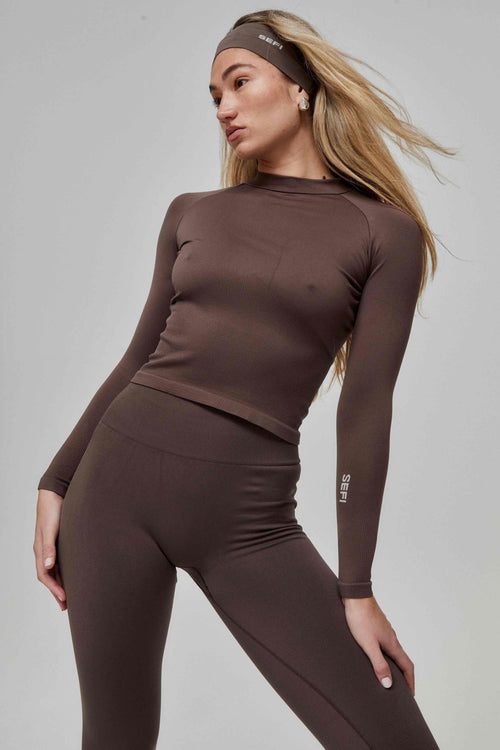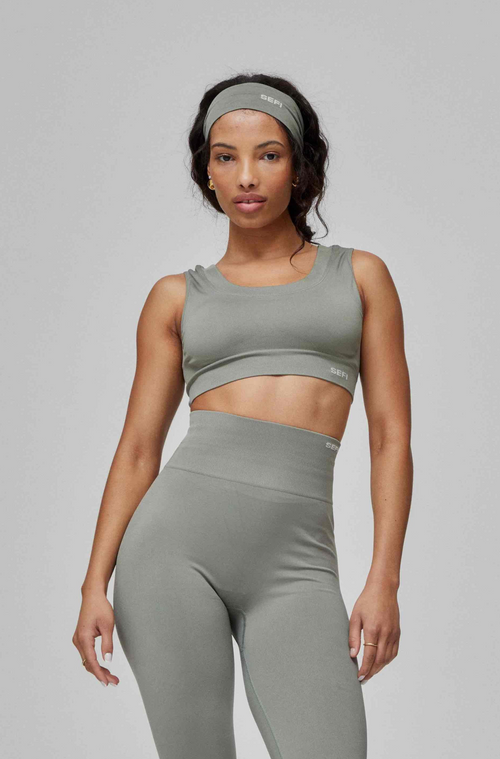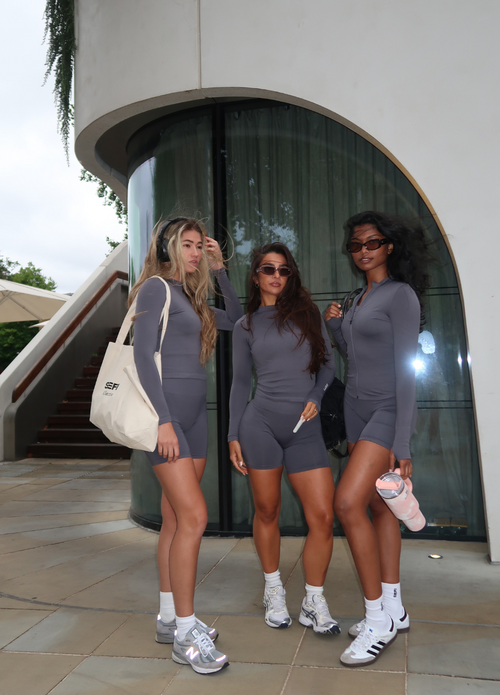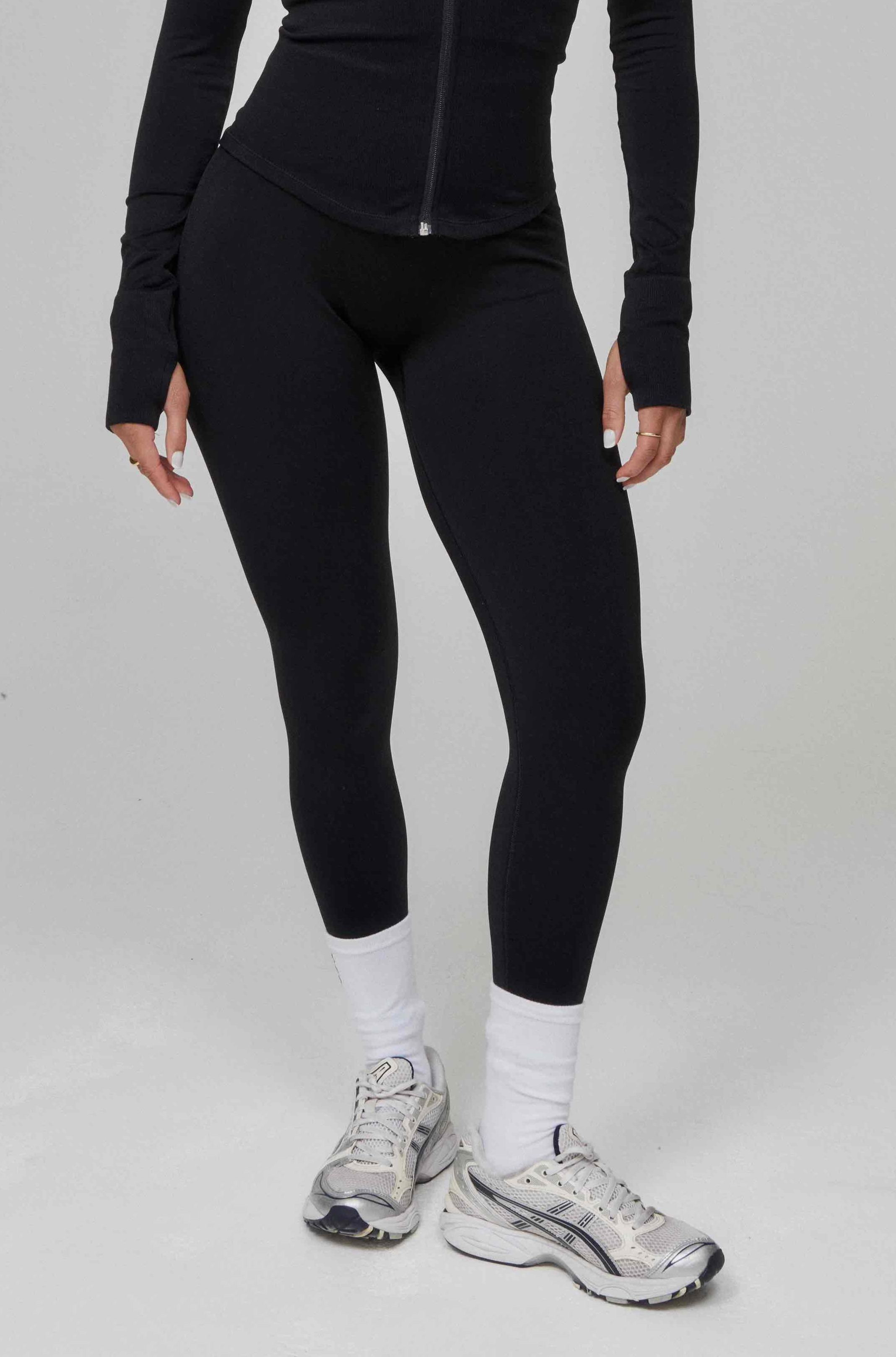It is incorrect to think of the modest sports bra as just another piece of clothing or accessory. You should handle it with the same consideration as any other exercise equipment you use because it is far more functional and significant than you may realize.
Any rigorous activity requires the right support, and wearing an inadequate sports bra can cause much more than just pain and discomfort. The only things holding your breasts to your chest are skin and weak ligaments; if you don't provide them the support they require, those ligaments may get damaged, which might have both short- and long-term consequences. Your breasts are not made of muscle.
Who Is In Need Of A Sports Bra?
Wakefield-Scurr insists that women of all sizes can benefit from sports bras despite the widespread belief that those with larger breasts require more support from them.
All breast shapes and sizes can undergo some degree of strain on the skin and supporting tissues of the chest during physical exercise, which can cause early sagging.
Women with smaller busts can benefit from sports bras just as much as those with larger busts. It's more important to prevent than to treat.
What Is The Ideal Fit For A Sports Bra?

Breast soreness is a frequent issue that affects about half of women, and incorrectly fitting bras can exacerbate the agony.
Selecting a sports bra should be done with careful consideration for three important aspects of fit: the underhand, the straps, and the cups.
The base of every bra is the underhand. It is the component of the bra that decides how supportive it will be since it should function as a shelf that securely fits around your ribcage, on which the bra's body or cups will rest.
You should be able to pull at the sides of a bra until there is a gap that is no more than 5 cm from your ribs, which indicates that the bra is fitting properly. The straps should also adhere to this criterion, extending no more than 5 cm when drawn up from the shoulders.
Regarding the cups, they should fit to help elevate and divide the breasts, with none leaking over the top or under the arms.
Also read: 5 Common Gym Clothing Mistakes Women Are Making
7 Sports Bra Mistakes You Need To Look Out
The most frequent errors you may be making with your sports bras are listed below, along with advice on how to fix them:
Mistake 1: You believe that the size of your sports bra and regular bra are the same.
The idea that a woman's regular bra size and the sports bra she should wear have to match is among the most widespread myths regarding sports bras. It's also clear that not all women experience this, even though it might be for some of them.
The sports bra you decide to wear should fit flawlessly because, in all honesty, every bra fits differently. It is important to remember that the primary purpose of a sports bra is to support your breasts during physical activity.
You should only use your regular bra size as a guide. Use an online sports bra size calculator, like the one on our website, to find out what your sports bra size is. As an alternative, before making any sports bra purchases, you might want to have your measurements taken by a qualified fitter.
Mistake 2: You believe you don't need a sports bra because of your small bust.
The majority of women also hold the widespread notion that if they have smaller breasts, they don't need to wear a sports bra when exercising. It's true that heavier busts require more support because they weigh more. However, enough support is necessary for both large and tiny breasts, particularly during intense exercise.
Since ligaments are still the only things holding small busts to the chest, they will unavoidably move and bounce around while you exercise. Your little breasts will stretch the ligaments if you don't provide them the support they need, and the harm is permanent. This may eventually result in drooping in addition to pain and discomfort.
Mistake 3: You don't have an adjustable sports bra.
At first, pullover bras seem fantastic. Unmatched convenience is provided by them, as they are simpler to put on and take off after your workout. Wearing them does have a few notable drawbacks, though.
First of all, your body is ever-changing. Your breasts rarely stay the same size from month to month due to hormonal swings, and you may gain or lose weight.
Because they get less elastic after a few loads of laundering, the straps on a pullover sports bra may also eventually feel looser. If you continue to use worn-out pullover sports bras, you may find yourself experiencing some chest pain after your workouts because those straps are crucial for supporting the weight of your breasts and keeping the bra in place.
These problems won't arise if you wear adjustable sports bras. The adjustable sports bras we have in stock here at the store come with adjustable straps that may be stretched or shortened to suit changes in your torso and different clasp combinations.
Mistake 4: You don't wear your sports bra appropriately for exercise.
There is no one-size-fits-all sports bra. In the same way, you shouldn't work out in the same sports bra every time. Wearing the appropriate sports bra for the workout you're performing that day will benefit you. Different sports bras are made for different kinds of activities.
Sports bras are often categorized using the term "impact" and come in a variety of support types. Here's a quick rundown.
Sports bras with low impact are made for exercises and other activities when excessive breast bouncing is not expected. They're also a fantastic choice for ladies who have smaller busts. For everyday activities like going for a stroll or running errands, you can wear low-impact sports bras. For mild workouts like yoga or pilates, low-impact sports bras are appropriate as well.
Sports bras with medium impact provide an average level of support, typically by squeezing the breasts. They're a fantastic option for elliptical use, hiking, and stationary cycling.
The highest level of support is provided by high impact sports bras, which are made for physically demanding activities that could cause the breasts to bounce more. Larger cup sizes and ladies who like CrossFit, HIIT, kickboxing, or running work best with these.
Mistake 5: The underwire doesn't pierce your breast tissue or rest comfortably on your ribs.
Though difficult, this is a frequent issue nonetheless. The point where the wires meet in the center of your breasts, known as the central gore, should always rest flat and flush against your chest. Increase a cup size if you observe any overspill or digging in, as the wires usually suggest that the cup size is too small when they are not "tacking" to your chest.
Another possibility is that the band isn't tight enough. To see if that helps draw the wires against your chest, try moving the band away from your back and extending it as far as you can. If so, you'll need to get a smaller band size in order to keep it in place! More confusingly, sometimes the reason is as simple as your breast form not being compatible with that type of bra.
No matter how well they fit everywhere else, a lot of bras may protrude from your chest if your bust is full, with a lot of volume just in the middle of your cleavage. If so, consider searching for a style with a deeper-shaped, more "projection" to the cups or one with a stretch lace top cup.
Mistake 6: You load your bra into the dryer or washing machine.
There is a care label inside almost every bra that advises hand washing only. This is the most reliable method for making sure your bras last as long as possible. The issue with washing bras in the machine is that they may snag on other objects and get distorted and broken throughout the wash cycle.
The straps will twist up, and the hooks will catch on something. Because, let's face it, hand washing can be a huge chore, and we just don't always have the time; if you must wash your bra in the machine, make sure you use a washbag designed specifically for lingerie and set the machine to a delicate cycle on a low temperature without adding much more.
Nothing at all suggests that you tumble dry your bra! The fabric may deform, the elastics may stretch and rip, and in certain situations, the high temperatures in a dryer may even heat the underwires to the point where they scorch through the fabric. Make sure your bras are always dried flat or dangling over a wire in the middle. They could stretch and warp if you hang them from the straps or band.
Mistake 7: You hold onto them for too long.
Finally, but just as importantly, wearing a bra for an extended period of time is the 7th most frequent mistake we observe with them! When properly maintained with hand washing and rotating wear, a bra's lifespan should be approximately six months. Although many bras will survive longer than this, there comes a moment in the bra's lifespan when it simply can't perform the necessary functions.
You may certainly take this into account if you wear a bra exclusively on special occasions and it comes out maybe once a month or twice, but if it comes to your everyday essentials and bras that you wear frequently, make sure you're not keeping them longer than you absolutely need to. The elastics will have deteriorated after six months and might not be able to offer the proper level of support anymore.
Finding the ideal sports bra for your needs should be made simpler if you adhere to these simple suggestions. We provide effective sports bras for low-impact exercises like yoga and adaptable sports bras for intense, high-impact workouts. Browse our assortment of sportswear to discover what you're searching for!
Also read: 7 Activewear Wardrobe Essentials For Women
Final Thoughts
In summary, a sports bra is an essential piece of apparel for any active person and an essential piece of sporting equipment. You can make sure you're getting the most out of your sports bra and putting your breast health first by being aware of these typical sports bra mistakes women make while wearing them and taking proactive measures to avoid them.
Thus, take some time to consider your sports bra and make sure you're wearing the appropriate size, fit, and impact level for your activity before you hit the gym or go for a run. Your body will appreciate it!
FAQs
Q1: What are some common sports bra mistakes that women make? A1: Among the typical errors made by women in sports bras are:
1. Wearing a sports bra that is too small or poorly fitted can lead to drooping, pain, or discomfort.
2. Failing to select the appropriate sports bra—a low impact sports bra for yoga, for example, or a high impact sports bra for jogging.
3. Not frequently cleaning or replacing the sports bra can result in the growth of bacteria, an unpleasant odor, or a loss of suppleness.
4. Wearing a sports bra that is overly tight, too loose, or with straps that pierce the skin can have negative effects on respiration, posture, and blood flow.
5. Wearing a sports bra that is out of style with the rest of their athleisure wear can have an impact on their mood, confidence, and sense of style.
Q2: How to choose the right type of sports bra for the activity?
Women should take the amount of impact, their breast size and shape, and their personal preferences into account when selecting the appropriate sports bra for the activity. The amount that the breasts bounce during an activity is referred to as the level of impact, and it can range from minimal to high. Low-impact exercises like yoga, pilates, and walking call for a sports bra that is comfortable, flexible, and soft. Cycling, hiking, and dancing are examples of medium-impact activities that call for a sports bra that is supportive, breathable, and moisture-wicking. Running, jumping, and boxing are examples of high impact exercises that call for a sports bra that is supportive, compressive, and shock-absorbing.
Q3: How do you wash and replace the sports bra?
Women should replace their sports bras by washing them according to the care directions on the label, avoiding the use of fabric softeners, chlorine, or strong detergents. After each use, the sports bra needs to be cleaned, ideally by hand or on a mild cycle, in a mesh bag. The sports bra should never be ironed or dry-cleaned; instead, it should be air-dried or tumble-dried on low heat. Every six to twelve months or when the sports bra begins to exhibit indications of wear and tear, including stretched-out elastic, fading color, or loose stitching, it should be replaced.
Q4: How do you match the sports bra with the rest of the activewear for women?
Women should think about the color, pattern, and style of the sports bra and the outfit when matching it to the rest of their activewear. The sports bra can be patterned or printed to give some flair and personality, or it can be a plain color that contrasts or matches the attire. A crop top or tank top that can be worn alone or layered with a jacket or sweatshirt is another option for the sports bra. A matching pair with leggings, shorts, or a skirt might also include a sports bra. The sports bra should be selected based on the wearer's mood, the season, and the occasion.

